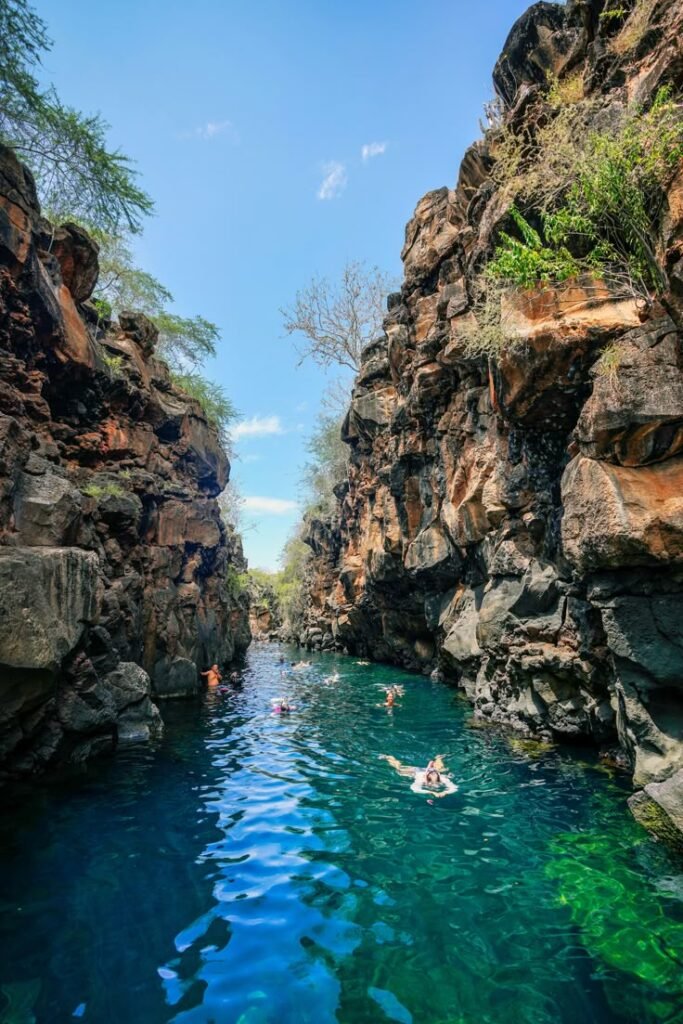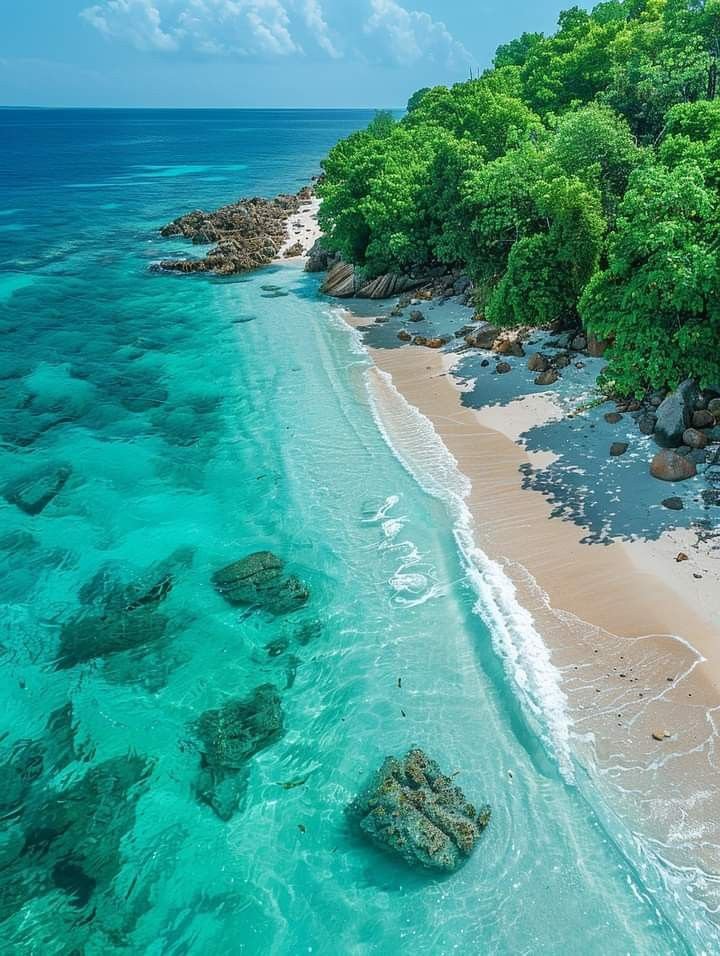Determining the best time to visit islands can transform an ordinary vacation into an unforgettable experience of perfect weather and ideal conditions. Imagine stepping off a plane into warm sunshine, feeling tropical breezes caress your skin while the rest of the world shivers through cold months or swelters in uncomfortable heat. Finding that perfect island getaway isn’t just about choosing a beautiful destination—it’s about knowing when to go. The art of selecting the best time to visit islands involves understanding the seasonal rhythms that govern these paradise-like destinations scattered across our oceans. This comprehensive guide will help you discover which islands offer the most inviting warmth during each season, ensuring your escape to paradise happens at precisely the right moment.
Winter Escapes (December-February): Chasing Summer in the Southern Hemisphere
When searching for the best time to visit islands during winter months, the southern hemisphere and equatorial regions offer perfect retreats from northern cold.
As northern regions plunge into winter’s chill, a world of sun-drenched islands awaits those willing to venture southward or near the equator. These destinations offer a perfect antidote to winter blues, with their warm waters, golden sunshine, and vibrant local cultures that thrive during their summer months.
- The Caribbean Islands transform into an oasis of perfect weather during winter months, with temperatures hovering between 75-85°F (24-29°C) and minimal rainfall creating ideal conditions for exploring Jamaica’s lush rainforests, lounging on Barbados’s platinum beaches, or sailing around the British Virgin Islands’ crystal-clear waters without the threat of hurricane season that defines their autumn months.
- Thailand’s southern islands like Koh Samui, Koh Phangan, and Koh Tao enjoy their driest, most pleasant weather from December through February, offering visitors perfect conditions for underwater adventures with visibility extending up to 30 meters in some diving spots, alongside balmy evenings perfect for authentic beachside dining experiences under star-filled skies.
- The Maldives showcases its full splendor during winter months with minimal rainfall, consistent sunshine, and water temperatures around 84°F (29°C), making this the prime time to experience its overwater bungalows, vibrant coral reefs, and legendary sunsets without the interruption of afternoon showers that characterize other seasons.
- Australia’s Whitsunday Islands bask in their summer glory between December and February, offering visitors the rare opportunity to experience the Great Barrier Reef with water visibility at its annual peak, though travelers should note the occasional tropical shower that brings refreshing relief from the summer heat while keeping the landscapes lush and vibrant.
- The Canary Islands present a unique winter escape for Europeans seeking warmth without long-haul flights, as these Spanish territories off Africa’s coast maintain pleasant temperatures around 70°F (21°C) even in January, allowing visitors to hike volcanic landscapes, lounge on black and golden beaches, and explore charming villages while the continental mainland shivers through winter.
Spring Retreats (March-May): Perfect Shoulder Season Experiences
Spring represents an ideal best time to visit islands for travelers seeking value, pleasant weather, and fewer crowds before peak summer tourism begins.
Spring offers savvy travelers a golden opportunity to experience islands at their best, often with fewer crowds and more affordable prices before summer’s peak season begins. These months represent the sweet spot for many destinations—warm enough for all beach activities but without the intense heat, humidity, or afternoon storms that summer can bring.
Pacific Paradise: Hawaiian Islands
- Hawaii’s diverse islands enter their ideal visitation window during April and May when winter’s occasional rains have subsided, summer crowds haven’t yet arrived, and temperatures settle into a perfect 75-85°F (24-29°C) range, creating ideal conditions for experiencing everything from Kauai’s dramatic Na Pali Coast hikes to Maui’s legendary Road to Hana without the traffic that defines summer months.
Southeast Asian Gems
- Bali transforms into a paradise during spring months as the wet season concludes, leaving behind lush, green landscapes under consistently blue skies, with temperatures around 85°F (29°C) providing perfect conditions for exploring ancient temples, vibrant rice terraces, and uncrowded beaches before the July-August tourist surge brings higher prices and limited accommodation options.
Mediterranean Awakenings
- The Greek Islands begin their awakening in late April and May as temperatures climb into the comfortable 70s°F (low to mid-20s°C), the Mediterranean becomes increasingly swimmable, and local communities prepare for the season—this period offers visitors the authentic experience of watching Santorini, Crete, or Rhodes come alive with spring flowers blooming against whitewashed villages, without the intense summer crowds that can transform the experience.
- Bermuda offers perfect spring conditions with temperatures reaching the low 70s°F (around 22°C) by April, making this the ideal time to experience the island’s famous pink sand beaches, explore its historic towns, and enjoy water clear enough for spotting colorful fish while snorkeling directly off the shore, all before the more humid summer months arrive.
- The Seychelles experiences its transition period between seasons during April and May, resulting in calm seas, excellent visibility for diving and snorkeling among its vibrant coral reefs, and pleasantly warm temperatures around 84°F (29°C) with gentle breezes that keep conditions comfortable even during midday explorations of its famous granite boulder beaches and unique wildlife.
Summer Paradises (June-August): Islands That Balance Warmth and Comfort
For those seeking the best time to visit islands during northern summer months, these destinations offer perfect temperature balance without excessive heat or humidity.
While summer brings intense heat to many destinations, certain islands maintain their appeal through ocean breezes, higher elevations, or geographical positions that create microclimates of perpetual comfort. These destinations offer reliable sunshine without the excessive humidity or temperatures that can make some tropical locations challenging during summer months.
Atlantic Ocean Retreats
- The Azores, Portugal’s volcanic archipelago in the mid-Atlantic, maintains comfortable temperatures around 75°F (24°C) throughout summer, creating perfect conditions for exploring its dramatic landscapes of crater lakes, thermal springs, and lush hiking trails, while the surrounding ocean waters warm up enough for comfortable swimming and encounters with dolphins and whales that frequent these nutrient-rich waters.
South Pacific Havens
- Fiji’s 333 islands experience their dry season during Northern Hemisphere summer, with temperatures around 80°F (27°C) moderated by the consistent trade winds that keep even the warmest days feeling comfortable—this period offers visitors the best conditions for experiencing both the world-class coral reefs and the interior highland landscapes where traditional villages maintain centuries-old customs far from the coastal resorts.
- Sardinia and Sicily embrace their Mediterranean summer glory with temperatures in the 80s°F (high 20s°C), creating perfect conditions for experiencing their unique blend of historical sites, distinctive cuisines, and beaches that rival any tropical destination—the reliable sunshine and warm sea temperatures make this the ideal time to experience these islands’ famous grottos, coves, and crystal-clear waters.
- San Juan Islands in Washington State offer a temperate summer escape with daytime highs rarely exceeding 75°F (24°C), creating ideal conditions for whale watching, kayaking through calm channels, cycling across pastoral landscapes, and experiencing the unique microclimate that sustains lavender farms and vineyards in this corner of the Pacific Northwest.
- Japan’s Okinawa archipelago presents visitors with its extraordinary blend of Japanese precision and tropical atmosphere during summer months, when temperatures hover in the mid-80s°F (around 30°C) and the surrounding coral reefs—some of the most diverse in the northern hemisphere—display optimal conditions for underwater exploration alongside opportunities to experience the islands’ unique Ryukyu culture and cuisine.

Autumn Adventures (September-November): Extended Summer Experiences
Autumn represents a hidden gem in the calendar when determining the best time to visit islands, offering summer-like conditions with fewer crowds and often more affordable prices.
For those seeking to extend their summer, autumn presents an exceptional opportunity to visit islands that maintain warm temperatures while becoming less crowded as peak season visitors depart. These destinations often offer the perfect combination of summer-like conditions with lower prices and a more relaxed atmosphere.
Mediterranean Extended Summer
- Malta and Gozo remain bathed in Mediterranean warmth well into October, with sea temperatures staying swimmable around 75°F (24°C) until late autumn, allowing visitors to explore the islands’ remarkable 7,000 years of human history, swim in secluded coves, and experience local harvest festivals without the intense crowds that characterize the summer months.
- The Maldives enters its shoulder season during autumn months, offering slightly lower prices while maintaining temperatures around 84°F (29°C) and increasingly favorable conditions as November approaches—this period represents an excellent opportunity to experience this bucket-list destination’s overwater bungalows and extraordinary marine life before the winter high season brings peak occupancy and prices.
- Cyprus holds onto summer longer than most Mediterranean destinations, with beach-worthy weather often extending through October and temperatures remaining in the 70s°F (mid-20s°C) even in November, creating ideal conditions for exploring both its ancient archaeological sites and picturesque mountain villages without the summer crowds that can transform the experience of visiting popular areas.
- Mauritius shines during autumn months as its dry season continues through October with temperatures around 75°F (24°C), creating perfect conditions for experiencing this Indian Ocean island’s extraordinary beaches, multicultural heritage, and unique wildlife, including opportunities to hike through national parks where rare species like the pink pigeon have been brought back from the edge of extinction.
- The Galapagos Islands offer some of their best conditions during autumn, particularly September through November when the Humboldt Current brings nutrient-rich waters that attract diverse marine life, creating extraordinary underwater visibility for snorkeling encounters with playful sea lions, marine iguanas, and countless tropical fish against a backdrop of comfortable temperatures around 75°F (24°C).
Practical Planning Tips: Choosing Your Perfect Island Escape
Understanding the best time to visit islands requires consideration of several practical factors beyond simple temperature readings to ensure your perfect vacation.
Beyond simply identifying which islands are warm during certain seasons, truly successful island vacation planning involves understanding several key factors that can transform your experience from merely pleasant to truly extraordinary.
Weather Pattern Analysis
- Research “microseasons” within larger seasonal patterns by consulting local weather resources rather than general country information, as islands often have distinct climate patterns that differ significantly from mainland areas or even neighboring islands—for example, Hawaii’s northwestern shores experience dramatically different winter conditions than their southern counterparts just a few miles away.
- Consider rainfall patterns alongside temperature when planning your perfect island escape, recognizing that brief, intense afternoon showers in tropical destinations often clear quickly and help cool the air, while providing the moisture that creates the lush landscapes that make these destinations so appealing in the first place.
- Investigate water temperature and visibility conditions for your preferred activities, as warm air temperatures don’t necessarily correlate with comfortable swimming conditions—islands influenced by cold ocean currents may require wetsuits for comfortable water activities even during their warmest months on land.
- Align your visit with marine life migrations or natural phenomena that interest you, whether that’s whale watching seasons in the Azores, turtle hatching in the Caribbean, or manta ray aggregations in particular tropical destinations—these natural events often follow reliable seasonal patterns that can add extraordinary dimensions to your island experience.
- Factor transportation logistics into seasonal planning, recognizing that some islands reduce flight and ferry schedules significantly during their off-seasons, potentially limiting your mobility or requiring more advance planning than would be necessary during peak periods when multiple daily connections are available.

Considerations Beyond Weather: The Complete Island Experience
While pursuing ideal weather conditions remains a primary consideration when timing island visits, several additional factors can significantly influence your experience and should be weighed alongside climate considerations.
- Research local cultural festivals and events that might enhance your island experience or, conversely, create accommodation shortages and higher prices—many islands host significant celebrations tied to religious calendars, harvest seasons, or historical commemorations that transform the local atmosphere and offer unique cultural insights.
- Consider the trade-offs between peak season amenities and crowds, recognizing that while shoulder seasons offer fewer visitors, some restaurants, tour operations, and cultural venues might operate limited schedules or close entirely during quieter periods—particularly on smaller or less internationally developed islands.
- Investigate how seasonal changes affect specific activities that interest you, from surfing conditions that might peak during otherwise “off-season” months to fishing opportunities that follow migratory patterns or local regulations with designated seasons for certain species or areas.
- Factor wildlife and natural phenomena into your timing decisions, whether you’re hoping to witness massive whale shark aggregations that follow plankton blooms in specific seasons or experience the extraordinary bioluminescent bays of Puerto Rico, which display their most intense illumination during particular moon phases and seasons.
- Consider how different island topographies create varied experiences within the same season, from mountainous islands where higher elevations offer cool relief during otherwise hot months to flat coral atolls where sea breezes provide the only respite from tropical heat—understanding these geographical influences can help you select the ideal environment for your preferences.
Embracing Island Time: Finding Your Perfect Moment in Paradise
The perfect island vacation emerges from the harmonious alignment of seasonal conditions with your personal preferences, creating memories that will warm you long after your return home. By understanding the rhythms that govern these dream destinations, you can discover your own perfect moment in paradise—whether that means witnessing the vivid revival of Mediterranean islands in spring, embracing the perfect balance of tropical summer in the South Pacific, extending your summer into autumn across the Caribbean, or escaping winter entirely on a southern hemisphere adventure.
Remember that the best time to visit islands isn’t universal—it’s deeply personal, defined by what matters most to you: whether that’s absolute warmth, minimal crowds, budget considerations, or specific experiences that only occur during certain seasons. The true art of island vacation planning lies in aligning these factors with your own travel dreams, creating not just a getaway, but a perfectly timed escape to exactly the conditions you’ve been dreaming about through daily life.
With careful planning and the insights shared in this guide, your next island adventure awaits—not just at any time, but at precisely the right time for you to experience these remarkable destinations at their very best.

